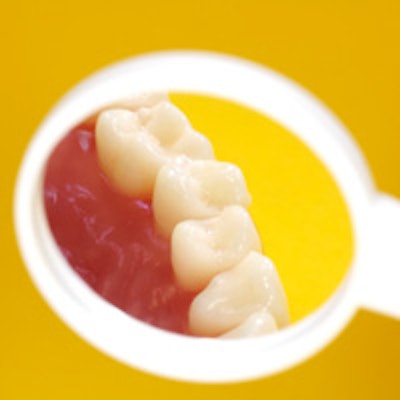
With composite resins, there are often trade-offs when selecting a high- or low-viscosity material. The higher viscosity composite resins often have greater rigidity and shrinkage stress while low-viscosity or flowable resins may not hold up to wear as well.
But incorporating nanotechnology into these materials have enabled companies to increase the filler content while maintaining low viscosity. While low-viscosity composite resins were previously introduced for class V restorations, the advancements made in the material have allowed them to be applied to different indications.
Now, Brazilian researchers have compared the performance of two composite resins by the same company but with different viscosities. In their study, researchers from the department of restorative dentistry at the São Paulo State University School of Dentistry have evaluated the performance of Voco's conventional GrandioSO and GrandioSO Heavy Flow composites in class II restorations in a split-mouth, two-year clinical trial.
"This study presents the possibility of using a flowable composite with high filler content, for performing class II restorations," the researchers noted (Journal of Dentistry, July 2014, Vol. 42:7, pp. 793-799).
Overall, both types of GrandioSO performed quite well. In fact, clinicians can likely take their pick and achieve similar results.
"After 24-months of clinical service, no significant differences were observed between conventional GrandioSO and GrandioSO Heavy Flow for the parameters analyzed," the researchers wrote. "Both materials provided acceptable clinical behavior in class II restorations."
Previously, GrandioSO was highly rated when evaluated by dental products and equipment publication The Dental Advisor (April 2012, Vol. 29:3). According to the review, GrandioSO could be dispensed easily and utilized for anterior and posterior restorations. Its shade matching and final aesthetics also were praised and the quality of its final polish given an excellent rating. Strong clinician feedback (90% said they would recommend it) also helped earn GrandioSO an Editor's Choice Award.
The team of researchers in Brazil sought to find out whether there would be differences in the performance of two types of GrandioSO after two years. They selected 47 participants who needed two class II restorations so that the materials could be tested equally in each patient. In total, they performed 94 restorations to remove carious dentin or a defective restoration.
Of the flowable resin restorations, 77% took place in premolars and 23% in molars, while 9% of the sites were shallow, 64% medium, and 27% deep. In the conventional resin group, 73% of the restorations were placed in premolars and 27% in molars, while 5% of the sites were shallow, 54% medium, and 41% deep.
The researchers placed a conventional glass ionomer cement, Vidrion R (SSWhite), on the floor of deep cavities and used the same self-etching adhesive system, Futurabond M (Voco), for all restorations. The clinicians used the incremental technique to insert the composite resin.
Evaluations of the restorations were conducted at one week (baseline), six months, one year, and two years by two calibrated examiners. At the six- and 12-month marks, 44 patients returned with 88 and 86 restorations, respectively, because two were lost in the GrandioSO Heavy Flow group, the only ones lost in the study.
In fact, only 4.6% of the restorations were lost, putting the products within the ADA standard range for provisional acceptance. To receive it, researchers must demonstrate that an adhesive material does not show microleakage and have 5% or less restorations loss after six months. For full acceptance, 10% or less of the restorations can be lost or have microleakage, a threshold that these products also met.
Lastly, 78 restorations were examined in 40 patients after two years. The researchers considered color match, marginal discoloration, secondary caries, wear, marginal adaptation, proximal contact, postoperative sensitive, retention, and surface texture.
At the two-year point, all of restorations were classified as acceptable, receiving an Alfa or Bravo score, the majority of which were the former. "No significant differences were observed between conventional and heavy flowable composites for all parameters after the different periods," the researchers wrote. They also "reported no significant differences in all evaluated criteria."



















